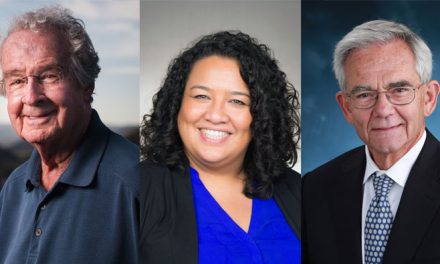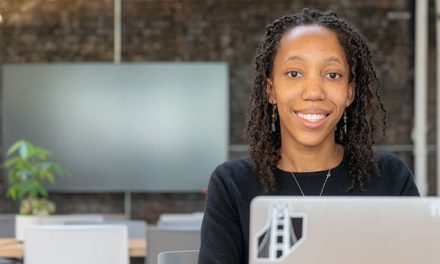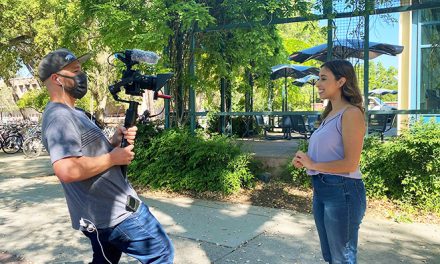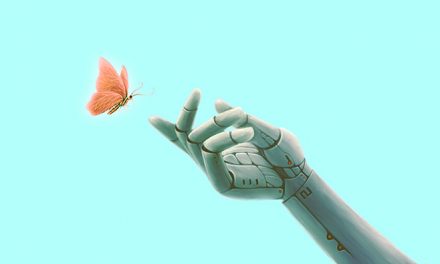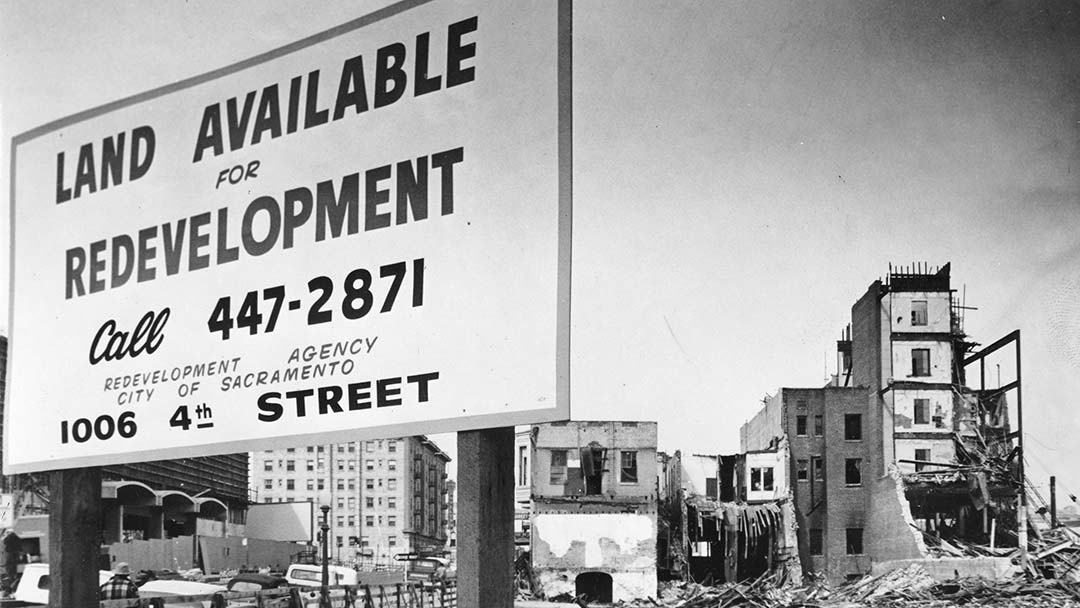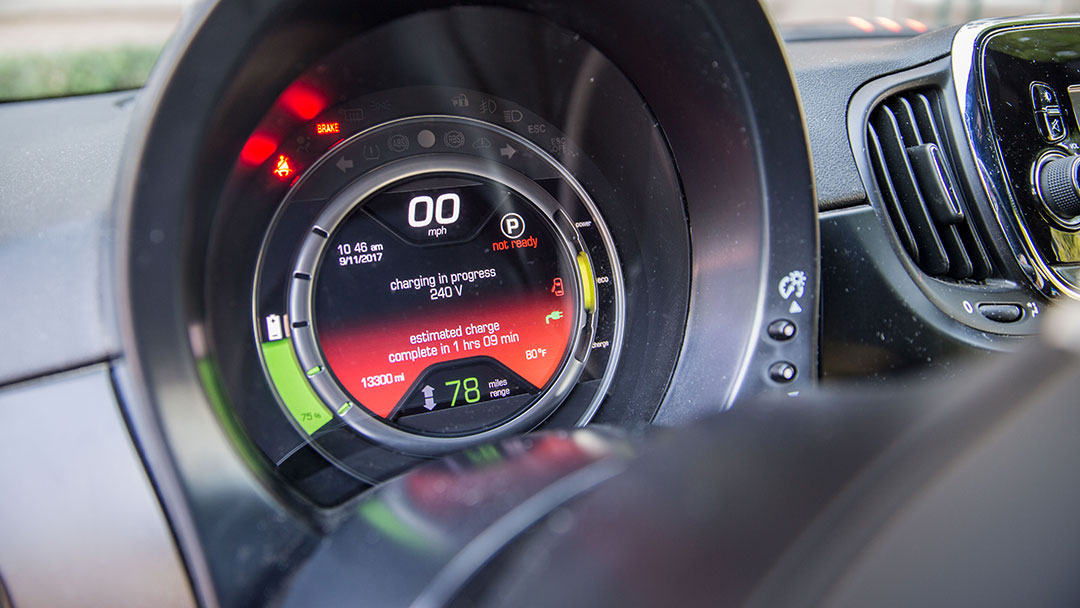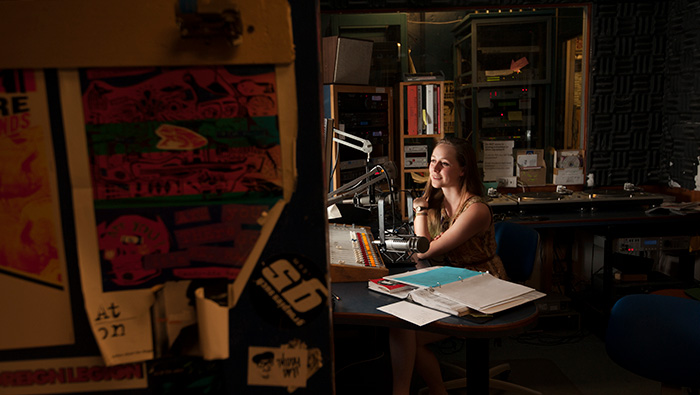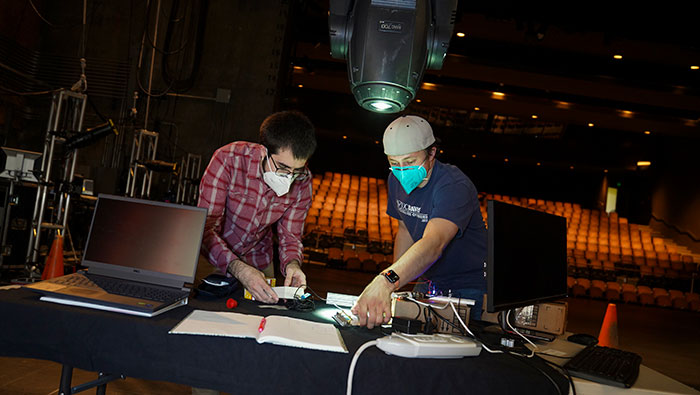
Ph.D. student Adam Zufall, left, and Billy Mazotti ’21 work onstage at the Main Theatre in Wright Hall. (Karen Higgins/UC Davis)
Space Research Takes the Stage
The Main Theatre at Wright Hall this month became the unlikely site of an experiment on technology that could eventually go into space.
Students in the Center for Spaceflight Research at UC Davis are working on technologies for a class of satellites that could inspect other spacecraft, such as the International Space Station, in collaboration with NASA. But up in space, the light is harshly bright with no atmosphere to attenuate the sunshine, and the technology must be configured for that environment.
Professor Stephen Robinson ’78 leads the lab. He has firsthand experience in the environment of space — as a former astronaut with four space shuttle missions and three spacewalks.
“I noticed the harsh light my very first couple of minutes in space. It really impressed me how bright the sun was and how dark the shadows were,” he said. “If you want to use a camera in space, it has to be calibrated and set up to be able to handle that kind of light and dark.”
That’s where the theater comes in.
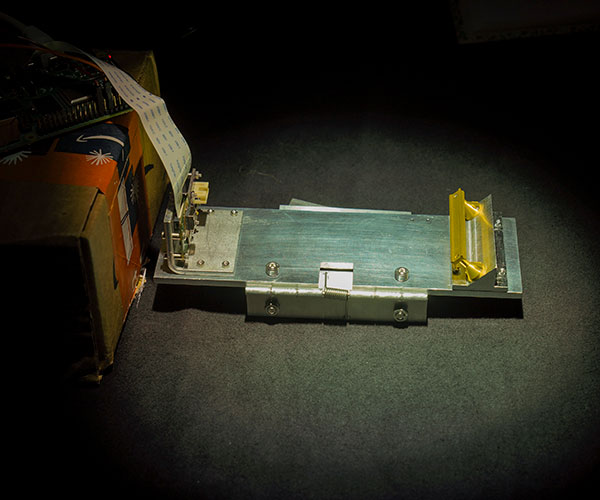
The engineering students created a mini replica of a handrail to be used in the experiment onstage. (Karin Higgins/UC Davis)
Master electrician Patrick O’Reilly helped lower the lights to the stage and shine them at their brightest. He said the assignment was unusual for his crew.
“This is absolutely out of the ordinary for us,” he said. “It is very unique to work with a different department and use lights made for the stage and have them be used for science.”
This project goes back a few years, with UC Davis collaborating with NASA on inspection satellites — which have not yet been used in space. Such a satellite has many benefits, explained Adam Zufall ’17, a Ph.D. student exploring the navigation.
“Every time they need to go outside to check something, they have to send two people. It is very costly, takes a lot of time and preparation, and is dangerous because you are leaving the spacecraft,” he said.
In addition to solving those problems, he said an inspection satellite could be used on planned space stations that may not be crewed by people at all times.
Zufall, who previously worked at NASA Ames Research Center, in Mountain View, California, said the team is using handrails installed on the outside of the International Space Station as navigational markers. Because every handrail on it has a number and location, the team used over 1,000 NASA images to create a machine learning algorithm to identify the handrails and where they are located. The idea is that the satellite could use that information to navigate around the spacecraft.
“That’s the eventual goal,” Zufall said.
The engineering students created a mini replica of a handrail to be used in the experiment onstage. With the simulated sun provided by the theater lighting, Zufall’s team was able to calibrate their satellite cameras for space.
For his part, Robinson, an avid musician, fondly described collaborating between science and the arts, recalling performing on that very stage in the Main Theatre eight years ago, when he was cast as a musician in a musical version of “The Grapes of Wrath.”
“I thought I was going to play a couple songs down in the orchestra pit, but we performed over 20 songs — in costume and onstage.”
Zufall also extolled the benefits of collaboration across fields. “The cross pollination is very healthy. You never know where inspiration will hit.”

